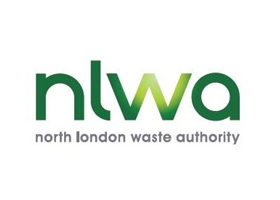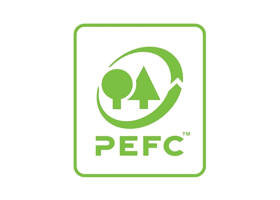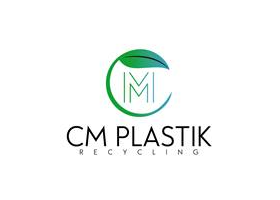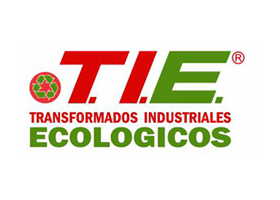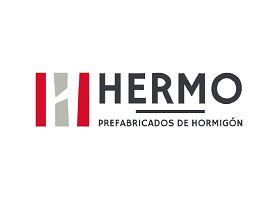In this section, you can access to the latest technical information related to the FUTURE project topic.
Sean Fryers, Connect 2 Cleanrooms, looks at off-site construction and the future of cleanrooms.
×
Expand Clean Rooms
Once you have established the need for a cleanroom it is important to consider which type of cleanroom you require. Traditional, modular, on-site or containerised systems are commonly adopted construction methods within the cleanroom industry.
Modular cleanrooms are typically freestanding, solid and robust structures that are suitable for use within an existing cleanroom, laboratory, manufacturing area or warehouse. No longer seen as a temporary, low budget option, the modular cleanroom offers a reliable and robust alternative to traditional build cleanrooms.
Using off the shelf proprietary components to build a facility that meets the customers’ exact requirements such as size, wall option including softwall, hardwall or monobloc panel systems, the bespoke modular cleanroom offers great flexibility to future relocation or expansion, allowing you to manage your investment in stages to ensure cost-effective ROI.
The on-site method of construction offers flexibility, so it can sometimes be difficult to control lead times and control costs due to changes to the specification that can occur mid contract.
The reactive containerised or portable solution is ideal for disaster sites where a quick fix is required e.g. the Ebola outbreak or fire damage etc. The versatile design allows for convenient and rapid transport and installation just about anywhere.
The introduction of the off-site cleanroom construction option is just one of the latest innovations to be introduced to the cleanroom industry by leading cleanroom manufacturer, Connect 2 Cleanrooms in-line with other industries / sectors, who are adopting this modern method of construction, seen by key players and the government as crucial to improving efficiency, cost, quality and sustainability.
The growth of off-site construction
The use of off-site construction methods is growing internationally due to improved customer perceptions and its value in the UK is £1.5bn, which is projected to grow to £6bn (UKCES, 2013). This equates to 7% share of the construction industries £90bn annual contribution to the UK economy (HM government 2013).
Internationally there is momentum to build more off-site and it has been identified by the UK government as a vehicle for the delivery of a more sustainable built environment. Building off-site is a change in construction culture towards a process of continuous improvement with enhanced productivity and as a result it requires being underpinned with research, innovation and training.
There is a range of terms which have been used for off-site construction but fundamentally it is the manufacture and pre-assembly of construction components, elements or modules in a factory environment before installation into their final location of which four main categories are considered:
Panelised systems or non-volumetric preassembly relates to items which are preassembled in factory-controlled conditions, are non-volumetric and do not enclose usable space eg. a door set.
Modular or bvolumetric is the term used to describe units prefabricated in a factory that enclose usable space that are typically fully finished internally eg. plant rooms which are then installed within or onto a building or structure.
Sub-assemblies & components refers to simplified components such as windows, wash stations and transfer hatches which are manufactured in factories.
Hybrid systems are a combination of more than one system or approach and are normally a combination of volumetric and panelised systems, interlocked door systems or control monitoring systems.
Also known as off-site prefabrication (OSP), off-site manufacture (OSM) and as a modern method of construction (MMC), off-site construction has been used in mass production of housing since the early twentieth century.
The end of World War II adopted this new approach for the construction of new dwellings as temporary housing for thousands of urban families ‘bombed out’ during the World War II. A white Paper, published by the government in 1945 outlined the objectives to complete the slum clearance with the emphasis to supplement traditional building operations using industry capacity outside the building industry. Immediately after the war there was a surplus of steel and aluminium production from industries geared to war output. These factors drove the industry towards prefabrication and resulted in varieties of concrete, timber, steel and hybrid framed systems.
The quality of prefabricated units has increased to the point where they may not be distinguished from those traditionally built.
Off-site construction provides a safer working environment, as the accident rates in manufacturing are some 29% less for major injuries and 52% less for fatalities than traditional build construction sites. Therefore, moving construction activities to a factory environment should correspond to a significant reduction in the number of major injuries and fatalities which are recorded each year within the construction industry. (Krug, et al, 2013).
×
Expand Visual representation clean room
Pioneering off-site construction methods
As the leading manufacturer in modular cleanrooms, Connect 2 Cleanrooms remain forward thinking, focussing on new solutions to ensure product quality and customer choice. With over 15 years’ experience they are pioneering new technologies in off-site construction, in-line with other industries. A first in the modular cleanroom manufacturing sector!
- Improved safety
- Low cost
- Low risk
- Improved timescales
The off-site construction method can be used for a variety of cleanroom purposes including large open spaces with no internal supports. Using pre-fabricated panels in preference to the frame system, the apertures and fixtures will be prepared off-site to minimise time, reduce safety risks and minimise the need for the specialist trades on site, eg. electricians. Door systems will be delivered as hybrid systems with frame handles, glazing and interlocking systems in place.
As a more cost-effective solution for clients the off-site method allows you to stay within your allocated budget and control lead times, as decisions are made well before the installation date. More time is allocated to the complex and critical design stage, which ensures accuracy and reduces the installation time on site, minimising business disruption, as well as offering a cleaner, safer and less congested site.
Off-site construction offers a more accurate and timely installation with less chance of failure, with all elements being tested prior to delivery to site ensuring these cleanroom projects are completed on-time.
McDonald’s use off-site constructed structures for its restaurants, and set a record of constructing a building and opening for business within 13 hours. Currently McDonald’s build 30 new restaurants per year in the UK using this method.
More suited to major construction where areas are clear of equipment, the off-site construction method can be offered where a strong preference to GMP sectors is required, as the structure allows for a fully flush finish. This is achieved due to there being no ledges, using floor to wall, wall to wall and ceiling to wall coving and a fully bonded floor.
Due to being classed as a building and construction and subject to size, location and the local authority, consultation regarding building regulations or planning permission may be required. This can allow for longer depreciation of the asset creating lower monthly costs to your business. Depreciation time scales could be from 10 to 50 years.
Why choose off-site construction?
The biggest advantage to off-site construction is thought to be the decreased construction time on site, together with increased quality, a more consistent product and reduced snagging and defects. Combined, this construction method can offer significant financial benefits through increased value, efficiency and sustainability.
The reduction in installation time means less business disruption reducing or eliminating business process downtime. Along with increased quality, less snagging and defects, and reduced waste, this sustainable approach to offsite construction of cleanrooms is the future. Offsite systems correspond to a reduction in waste of between 20% and 40% (WRAP, 2008)
Connect 2 Cleanrooms has demonstrated its experience within off-site cleanroom construction, following the successful installation of a large scale monobloc cleanroom, spanning 951m². With a requirement to achieve ISO class 8, the cleanroom includes a separate change area suitable for up to 60 operators and a material transfer area. The main cleanroom area, which was designed and installed for a global medical and technologies company to house their stitch bonding processes, has a footfall of 870m² and is designed to achieve 21 air changes per hour. Monitored via an ECO loop control system with temperature and humidity control, the cleanroom has 60 variable speed controlled HEPA ceiling fan filters, which are all accessible externally via the walkable ceiling for non-disruptive maintenance. The off-site construction method adopted for this installation ensured that the clients’ cleanroom was brought in on time, on budget, resulting in a happy client.
Tags
Connect2Cleanrooms Cleanrooms Manufacturing Medical Plastics News 
» More Information
« Go to Technological Watch







